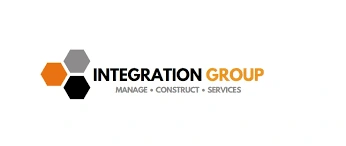
The construction industry, traditionally seen as conservative and slow to adopt new technologies, is beginning to recognize the transformative potential of digital twins. This advanced technology, which creates a virtual replica of physical assets, systems, or processes, offers unprecedented opportunities for improving design, construction, and facility management. However, despite its growing prominence, digital twins remain misunderstood by many in the construction industry. These misconceptions can prevent companies from fully leveraging the benefits of this powerful tool, slowing down the progress that digital twins can bring to the sector.
What Are Digital Twins?
A digital twin is a dynamic, digital representation of a physical entity, continuously updated with real-time data. Unlike static models or traditional blueprints, a digital twin evolves in sync with its physical counterpart, allowing for real-time monitoring, analysis, and optimization.
In the construction industry, digital twins can be applied to various aspects of a project, from individual building components to entire infrastructure networks. These virtual models are fed with data from sensors, IoT devices, and other sources to create a comprehensive and accurate depiction of the physical asset. This enables stakeholders to simulate different scenarios, predict outcomes, and make data-driven decisions throughout the project lifecycle.
Misunderstanding #1: Digital Twins Are Just 3D Models
One of the most common misconceptions is that digital twins are merely advanced 3D models or enhanced versions of Building Information Modeling (BIM). While BIM and digital twins share similarities, particularly in their use of 3D visualization, they are fundamentally different in scope and functionality.
BIM is primarily used during the design and construction phases to create detailed 3D models of buildings and infrastructure. These models are invaluable for planning and coordination. Digital twins, are dynamic and evolve in real-time, incorporating live data to reflect the current state of the physical asset. This real-time interaction allows digital twins to be used throughout the entire lifecycle of a project, from design and construction to operation and maintenance.
Misunderstanding #2: Digital Twins Are Only for Large-Scale Projects
Another misconception is that digital twins are only relevant for large-scale, complex projects or high-tech buildings. This belief can lead smaller construction firms to overlook the potential benefits of digital twins, assuming that the technology is too costly or complicated for their needs.
In reality, digital twins are highly scalable and can be adapted to projects of all sizes. Whether it’s a single-family home, a commercial building, or a large infrastructure project, digital twins can provide valuable insights and efficiencies. For smaller projects, digital twins can help streamline the design process, improve communication with clients, and optimize construction workflows. As the technology continues to mature, its accessibility is increasing, making it a viable option for a broader range of construction projects.
Misunderstanding #3: Digital Twins Are Too Complex to Implement
Many in the construction industry view the technology as too complicated or beyond their technical expertise. This misunderstanding can create a sense of reluctance or resistance to adopting digital twins, even when the potential benefits are clear.
While it’s true that implementing digital twins requires a certain level of technical knowledge, the learning curve is not as steep as some might fear. Many software solutions now offer user-friendly interfaces and comprehensive support to help companies integrate digital twins into their workflows. Construction firms don’t need to be tech giants to implement and benefit from digital twins. With the right tools and support, even companies with limited digital experience can successfully adopt this technology and reap its rewards.
Misunderstanding #4: Digital Twins Are Just a Trend
Some in the construction industry view digital twins as just the latest technology trend—something that might be popular now but will fade away as the next innovation comes along. This misunderstanding can lead to a reluctance to invest in digital twins, underestimating their long-term value.
In fact, digital twins represent a fundamental shift in how we design, build, and manage physical assets. The integration of real-time data with digital models allows for a level of insight and control that was previously unattainable. As the technology continues to evolve, its applications in construction will only grow, driving efficiency, sustainability, and innovation. Far from being a passing trend, digital twins are poised to become a cornerstone of modern construction practices.
Misunderstanding #5: Digital Twins Are Expensive and Unaffordable
Cost is often a concern for construction firms, particularly smaller ones. There is a common misconception that digital twins are prohibitively expensive and that only large companies with significant resources can afford to implement them.
While there is an initial investment involved in adopting digital twins, the long-term benefits often outweigh the costs. By improving design accuracy, reducing errors, optimizing construction processes, and enabling predictive maintenance, digital twins can lead to significant cost savings over the lifecycle of a project. Furthermore, as the technology becomes more widespread, the cost of digital twin solutions is decreasing, making them more accessible to companies of all sizes.
By recognizing that digital twins are more than just 3D models, are scalable for projects of all sizes, and are not as complex or costly as they might seem, construction professionals can begin to embrace this powerful tool. As digital twins continue to evolve and integrate into construction practices, those who overcome these misconceptions will be well-positioned to lead in an increasingly digital and data-driven industry.
Draftech – Your Project, Our Expertise
Testimonials
Thank you for all your efforts on our projects; they have been an invaluable contribution to their success. We look forward to working with you on future projects.
Ian Ferguson MPM Group
Jess and Karl at Draftech were amazing. The communication from the start was prompt, and the entire process was extremely easy. We needed their knowledge on Air Schematics, and they had made one up for our buildings that we service. Thanks so much, and we will be using you guys in the future. Cheers, Air Control Australia.
Greg Colebrook AirControl Australia
With Draftech’s thorough understanding of building services modelling and close attention to detail, Forth has been afforded the opportunity to outsource some of our BIM projects with absolute confidence in the accuracy of the final product.
Gary Murdoch Forth Consulting
Very professional and efficient organization. Delivered a great product to a tight deadline.
ACE Power
Karl and the team are very professional and have a vast knowledge of BIM coordination.
Dwayne Willaims Babinda Electrics
We had multiple large projects with tight deadlines and needed a company we could trust. The teams delivery, attention to detail and understanding of what is being designed is always executed to a high standard.
Martin O’Donovan Envar Engineers
Draftech offered a flexible and reliable approach to working collaboratively with our team. They met our expectations and quality requirements and also offered up new ideas.
Draftech have proven to be a valuable and trustworthy resource and we will continue to work with Draftech on other projects.
Simon Marsden Umow Lai
Draftech is different from others in the professionalism and features they provide.
The ability to walk through projects in real time online provides invaluable insight into problem areas and helps provide an efficient resolution on the spot without many phone calls, emails and the necessity for us to paw through countless drawings to understand the issues.
Todd Morris Manager - Air mech
Draftech were put forward to FIP Electrical as the solution to Coordinate, Model, carry out clash detection, provide Electrical Services Shop Drawings, as built documentation and completed electrical model.
Simon Thorpe FIP Electrical
In close collaboration Draftech set up all our systems and model deliverables. In this process Draftech have proven to be a valuable resource for us and demonstrated commitment, understanding and professionalism.
David Skelley DJCoalition
Draftech’s attention to detail and proactive nature throughout the project assisted us in identifying issues before becoming evident on site, saving us both time and unexpected costs.
Matt Payne PJM Engineering Services
They delivered very high quality Revit models and associated 2D documentation at key milestones, working to a tight budget and in strict accordance with the Architects’ BIM requirements.
Peter Thomas Geoff Hesford
We found Draftech’s work to be of high standard and the team delivered exactly as agreed, in fact, when we considered the project complete, Draftech put further resources into the project as they were not satisfied.
John Johnson Beca
Engaging Draftech during design gave us the tools to make smart decisions.
Hansen Yuncken Design Manager - Michael Harkins
The drafting service is timely, reliable and fit for purpose for the built environment.
Peter Harvey Harvey Industries
Draftech stands apart from other drafting services that we have previously used in their attention to detail and ability to adapt to the individual client’s requirements.
Doug Holt McCaig Aircon
I can confidently recommend Draftech as a solid and reliable supplier, and experts in their field. I look forward to working with them again in the near future.
Chris Behan Norman Disney & Young
After seeing the benefits Draftech provided us on the Townsville Hospital Redevelopment we have set up a relationship with Draftech and intend to continue to use their BIM knowledge and skills for our future projects.
Brad Lund Energy Power Systems
Draftech has no competition as they are in a class of their own.
John Boyes Babinda Electrics
Draftech Developments Drafting and Design Capabilities, in conjunction with their outstanding level of Client service and support has provided great solutions to our engineering and Drafting Design portions within our Gorgon Barrow Island Project.
Aaron Hazelton Applied Electro Systems Pty Ltd
Draftech set up necessary systems and workflows very quickly, but also setup auditable estimating and weekly cost tracking processes that we utilised, requiring little maintenance.
TOM PURDON MPM GROUP
































